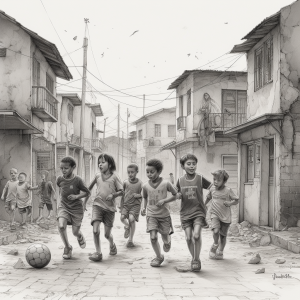How to kick a soccer ball- Outside Of The Instep.
Before we cover this technique ,it is advisable to teach your players all the previous techniques I’ve covered in this series. This kicking style, known as the “outside of the instep”, utilises a big surface area of the foot. Due to the large surface area used in this kick, it is ideal when passing and shooting.
It can be used for short, medium range passing and shooting. It’s ideal for free kicks when the shooter needs to bend the ball around a defensive wall and is a great weapon when the kicker adds enough force to create a big swerve on the ball. Everyone remembers the goal Roberto Carlos scored against France.
During the execution of this kick the foot assumes an unnatural position with the toes turning/ pointing inwards. This kick is very deceptive if used correctly and can outwit the best of goal keepers. The leg seems to swing one way but as we make contact with th ball, it slices and spins the ball in the opposite direction. If we want to hit the ball hard and without swerve, the run up should be at a slight angle, to compensate for the angled foot. To create the biggest swerve or curve possible the ball should be attacked straight on in the same direction.
Outside Of The Instep- Exercises.
Young children and beginners often find it difficult to “sense” exactly which part of the foot should make contact with the ball and on which side. Through normal fear of injury by kicking the ground, beginners will not flex their foot downwards. So if your a youth coach or parent, it is advisable to teach this style on a suspended ball first.
- Hold the ball in front of the kicking leg, slightly to the side, then drop it and with the foot turned inwards and firmly pointing downwards, try and make contact with the ball before it hits the ground.
- Same exercise as the one above, but take a few steps before dropping and kicking the ball.
- Drop the ball from the height of the chest and kick it after one bounce.
- A partner opposite throws a ball in a gentle curve and kicks it back to him, after one bounce.
- Similar to the first exercise, but kick the ball the moment it hits the ground.
- Throw the ball up high and kick it after the 2nd bounce, the moment it reaches the ground.
- Kick a stationary ball after a short run up.
- Kick a ball that is rolled from the opposite direction andfrom behind.
- Kick the ball thrown from the side first after one bounce, then on the volley.



I have some thoughts on this as well!! Here is the link:
http://www.zenfooty.com/articles_detail.php?articleno=11